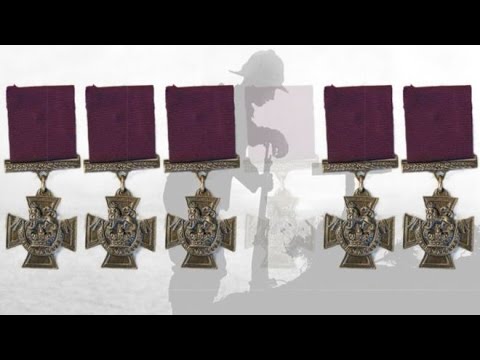
The set of six Victoria Cross medals famously known as the ‘Six VCs before breakfast’ went on display at the Fusiliers Museum, at the centenary of the Gallipoli landing. The amazing thing about these medals is that they were all awarded to one Regiment on the very first day of the Gallipoli Campaign. These six Victoria Cross medals – the highest military honor of UK and commonwealth – were awarded to six gallant soldiers of the Lancashire Fusiliers. This Regiment showed great valor in the bloody assault near Cape Heles in Turkey on April 25, 1915. It is reported that the Regiment started the campaign with 1007 soldiers and 27 officers, however in less then a day they were thinned down to 304 soldiers and 16 officers.
The ‘Six VCs before breakfast’ have never been seen together under one roof in the last 100 years. Before it was decided to put these medals on the 100-year celebration of the famous landing on Gallipoli, it was discovered that one of the six medals is missing. But as a result of the efforts of the Collection Officer at the fusilier Museum Sarah Stevens and a 30 year old veteran in the Army Col. Brian Gorski, the sixth medal was found and put where it belonged.
Sarah Stevens conceived the idea of getting together all of the Six VCs for the centenary display but finding the missing medal was certainly not an ordinary task. But when Col. Gorski joined the search for the missing medal, he put all his energies and abilities into the task.
Col Gorski started from the very beginning, by gathering all available information about Capt. Cuthbert Bromely. Capt. Bromely was one the recipient of the VC and his medal was missing from the set. Col. Gorskin built a family tree of Capt. Bromely and visited a number old houses and graveyards in a bid to locate any of Bromely family members. Col. Gorskin even went to a TV program to deliver an appeal for any information on the family of the Capt. Bromley, the BBC News reports.
After days of Painstaking detective work Gorskin succeeded in locating one of Bromley family members living in the same neighborhood where Capt. Bromely had lived. He started contacting them via emails and discovered that one of Bromley’s family members, who is living in London, still has the medal protected in a glass frame. When Col. Gorskin contacted him and told him about the display, he felt honored and agreed to give them the medal for the display.
Following are the short introduction about the six soldiers who display incredible velour and courage during the Gallipoli campaign and were awarded the ‘Victoria Cross’.
Captain Richard Reynolds Willis (1876-1966)
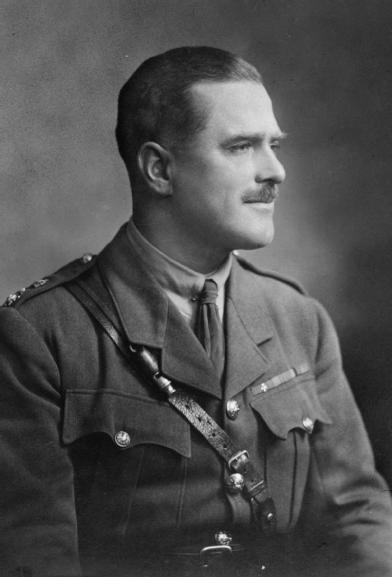
Captain Willis had the honor of being the Incharge of the ‘C’ company during the battle of Gallipoli. ‘C’ company won 4 out of 6 VC’s awarded on the first day of the Gallipoli campaign. He was famously known as being the bravest and courageous of his company. During the battle he stood high motivating his troops with a war cry telling them ‘Come on boys’. Willis died at the age of 89 in 1966, having sold his medal due to financial problems.
Sgt. Frank Edward Stubbs (1888-1915)
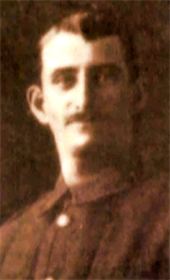
Sgt. Stubbs was given the difficult task of taking his platoon through the enemy’s heavy shelling to meet the ‘D’ company on top of the Hill 114. After landing on the beach Sgt. Stubbs successfully maneuvered his men to the top of the hill under a hail of enemy bullets. But Stubbs could not make to the top himself and was shot in the head, he died instantly. Stubbs is the only recipient among the 6 VCs who died on the landing day.
Sgt. Alfred Richards (1879-1953)
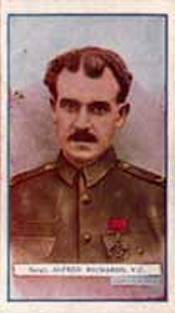
Shortly after successful landing on ‘W’ beach, Sgt. Alfred came under very heavy fire. He was shot several times in his leg, which was almost shattered to pieces. He did not give up the fight and kept t moving forward, crawling over thick barbed wire. He kept on motivating his fellow soldiers till he lost all the energy. He was evacuated to Egypt, where after a surgery his leg was amputated. Sgt. Alfred served again during the Second World War as ‘Home Guard’ and died in 1953.
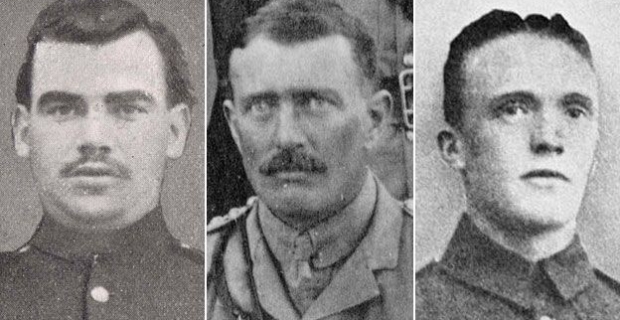
Pte. William Keenly (1886-1915)
Pte. Kenealy had volunteered to cut through the barbed wife despite being constantly fired upon by the Turks. His company could not advance due to barbed wires; Kenealy stepped forward and started cutting the wire. He was not very successful due to a faulty cutter, but as a recognition to his courage he was promoted to L/Sgt. He died later while fighting at Gully Ravine on June 28, 1915.
Cpl. John Elisha Grimshaw (1893-1980)
During the landing of Gallipoli, Cpl. Grimshaw’s duty was to establish a steady communication between the HMS Euryalus and the ground staff. However, during the actual landing he was found in the battlefield fighting and constantly motivating the soldiers amid the shower of shells and bullets. Grimshaw’s badge, his water bottle and bag pack, all were riddled with bullets but he emerged unscathed out of the battle.
Major Cuthbert Bromley (1878-1915)
Probably the most amazing display of courage, valor and dedication came from Maj. Cuthbert Bromley. Despite being one of the high ranking officers – Adjutant to the Commanding Officer at Gallipoli – Maj. Cuthbert showed unprecedented bravery in the battlefield, inspiring his men to fight more courageously. Cuthbert was first shot in the back on the very first day of the landing. He reported the wound three days later, and continued motivating his men. He was shot again shortly after reporting the first wound. He was promoted to Major Rank and led his men during the clashes of Krithia. Cuthbert got badly wounded after receiving multiple shots in his foot at Gully Ravine, but again refused to step down until the mission was accomplished. After spending a short while in a hospital in Egypt, Cuthbert got on board the Royal Edward to return to the Battle of Gallipoli but his ship was torpedoed and sank in the Aegean Sea.